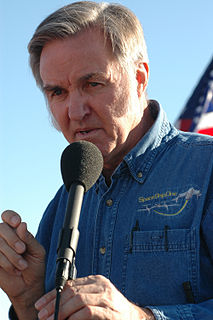Top 58 Quotes & Sayings by Burt Rutan
Explore popular quotes and sayings by an American scientist Burt Rutan.
Last updated on April 16, 2025.
The most impressive airplane ever, I believe, was designed only a dozen years after the first operational jet. Stayed in service till it was too rusty to fly, taken out of service. We retreated in '98 back to something that was developed in '56. What? The most impressive spaceship ever, I believe, was a Grumman Lunar Lander.
There was a wonderful little short four-year time period when marvelous things happened. It started in 1908, when the Wright brothers flew in Paris, and everybody said, 'Ooh, hey, I can do that.' There's only a few people that have flown in early 1908. In four years, 39 countries had hundreds of airplanes, thousands of pilots.
The photographs of space taken by our astronauts have been published all over the place. But the eye is a much more dynamic mechanism than any camera or pictures. It's a more exciting view in person than looking at the photographs. Of course, I personally am sick and tired of hearing people talk like that: I want to see it myself!
To allow public access to orbit, we would need breakthroughs that would lower the cost by a lot more than an order of magnitude and increase safety by a factor of 100 as compared to every launch system used since the first manned space flight. I think airborne launch will be a significant part of the safety solution.
Airplanes were invented by natural selection. Now you can say that intelligent design designs our airplanes of today, but there was no intelligent design really designing those early airplanes. There were probably at least 30,000 different things tried, and when they crash and kill the pilot, don't try that again.
I was shocked to find that there were actually climate scientists who wouldn't share the raw data, but would only share their conclusions in summary graphs that were used to prove their various theories about planet warming. In fact I began to smell something really bad, and the worse that smell got, the deeper I looked.
Space travel is the only technology that is more dangerous and more expensive now than it was in its first year. Fifty years after Yuri Gagarin, the space shuttle ended up being more dangerous and more expensive to fly than those first throwaway rockets, even though large portions of it were reusable. It's absurd.
I drove an electric car for seven years because of its advanced technology, not because I have any concerns about energy resources. I have none at all. And when environmentalists say that global warming is dangerous, unprecedented and that we'll have a tipping point for atmospheric carbon dioxide, it's just nonsense.
By 1973, we had a space station, the Skylab, and we had multiple probes going up to planets. So, all this wonderful stuff happened in 10 to 15 years. About that time, there should have been enormous initiatives to make it affordable for people to fly in space, not just a handful of trained NASA astronauts and Russian cosmonauts.
Flight out of the atmosphere is a simple thing to do and should have been available to the public twenty years ago. Ten years from now, we will have space tourism where you will be able to see the black sky and the curvature of the earth. It will be the most exciting roller coaster ride you can buy.
When you have a transportation system that the price of propellant is essentially negligible something is very wrong. If you look at any other transportation system, a car, a motorcycle, a train, an oil tanker, an airliner, you name it; about a quarter to a third of the operating cost is buying the propellant.
America was good enough to make a small compact lighter weight nuclear weapon. The Russians still had these big clunky heavy ones, so they had to build the big boosters in the arm's war, so now all of the sudden Russia could take off the shelf and put into orbit much heavier things than we could, so that's why they had the original leadership.
The next 15 years will see thousands of people leave the atmosphere on suborbital flights. My company's SS2 system might fly 100,000 people by 2024. If it is shown to be highly profitable, perhaps we will see 20,000 people traveling to orbit by 2035, and then thousands to the moon by 2050. If we make a courageous decision, like the program we kicked off for Apollo, we will see our grandchildren in outposts on other planets.
My study is NOT as a climatologist, but from a completely different perspective in
which I am an expert … For decades, as a professional experimental test engineer, I have analyzed experimental data and watched others massage and present data. I became a cynic; My conclusion - 'if someone is aggressively selling a technical product who's merits are dependent on complex experimental data, he is likely lying'. That is true whether the product is an airplane or a Carbon Credit.





















